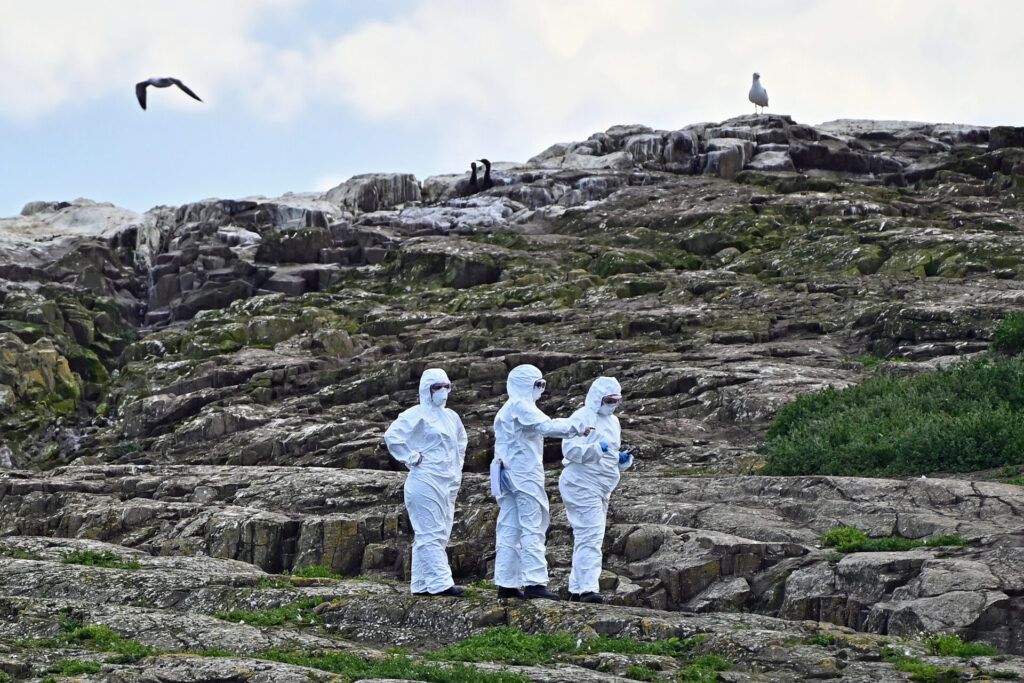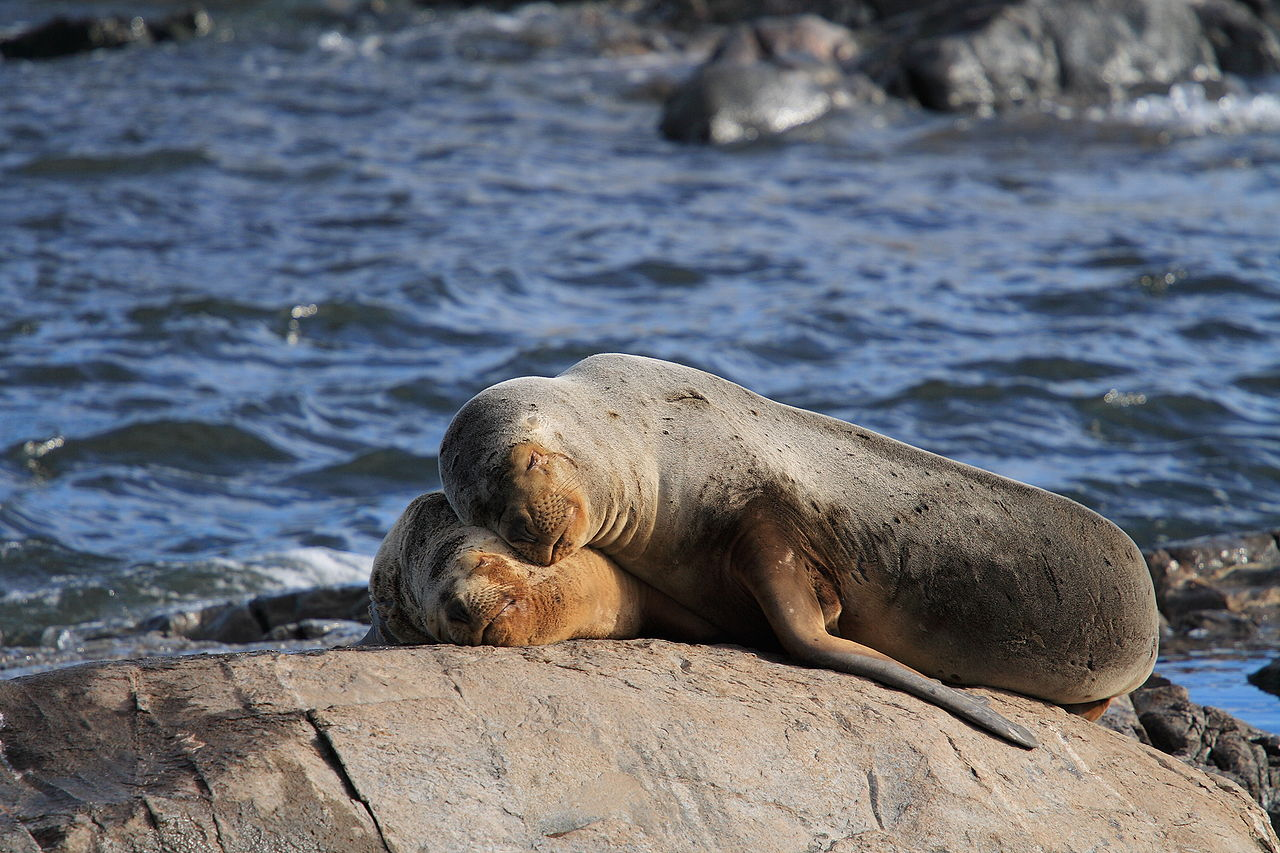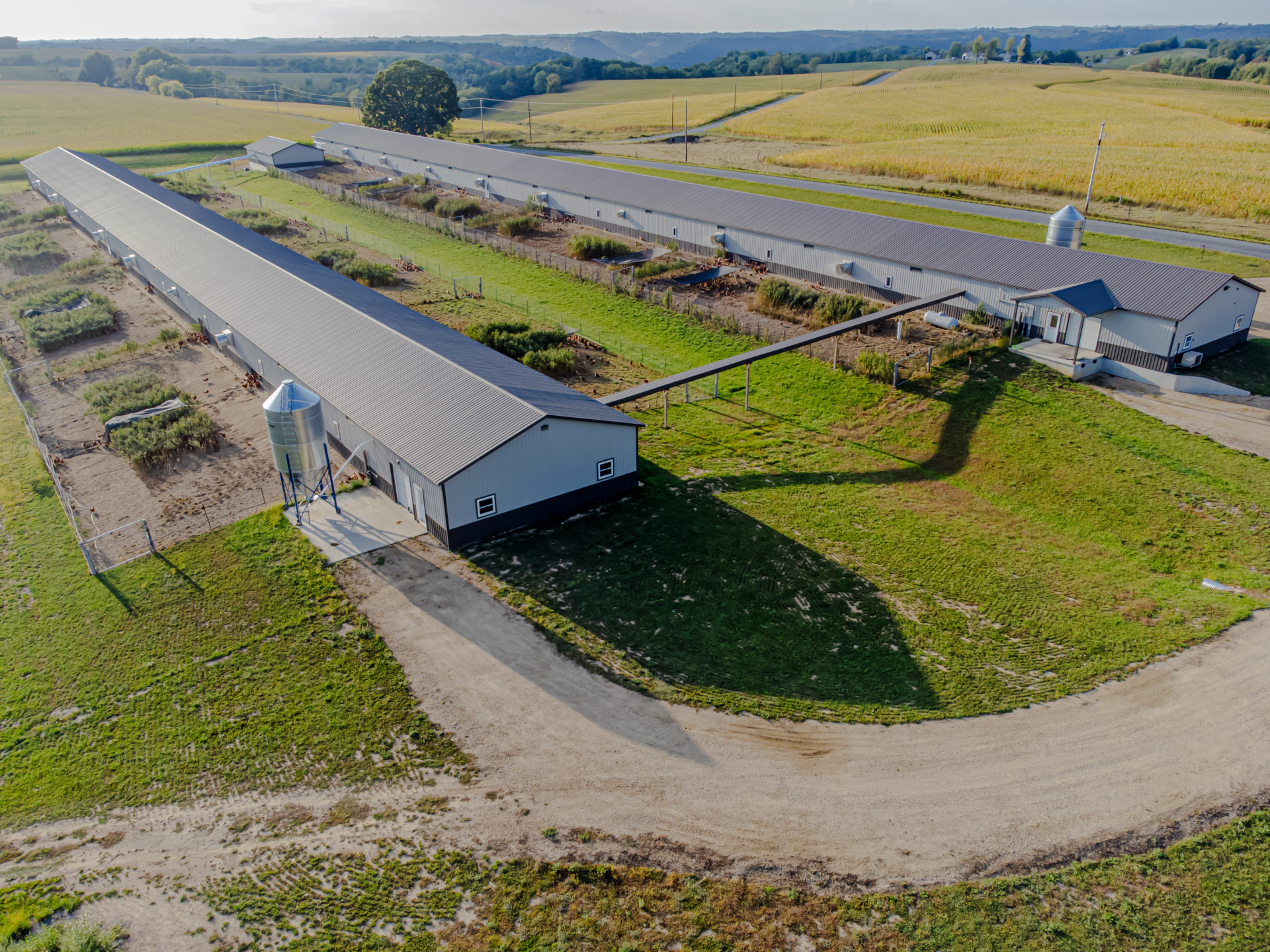How the ecological crisis of bird flu could become a human pandemic
By Georgios Pappas | October 12, 2023
 Rangers wear protective equipment last year on Inner Farne Island, an English seabird sanctuary, amid concerns over avian influenza. Credit: Ken Jack/Getty Images.
Rangers wear protective equipment last year on Inner Farne Island, an English seabird sanctuary, amid concerns over avian influenza. Credit: Ken Jack/Getty Images.
In early 2022, almost 10 percent of the global Dalmatian pelican population perished. The near-threatened species, one of the world’s largest freshwater birds, was not particularly susceptible to avian influenza in the past, but as soon as the pelicans arrived in their colonies in northwestern Greek lakes, they began to die—first by the hundreds and then the thousands as “bird flu” took hold. The disease has caused similar massive die-offs in other wild birds; it’s led officials in various countries to cull tens of millions of farm poultry; and it’s spread among and killed huge numbers of wild and farmed mammals—3,000 dead sea lions in Peru, 120,000 culled fur animals in Finland. The toll in domestic poultry has led many national organizations to employ the controversial technique of vaccinating farm birds against avian influenza, which some fear could—by not completely preventing infections—allow the virus to mutate in domestic flocks.
All these events, evolving in succession, may sound like the beginning of an apocalyptic fiction novel or film. Instead, they’re real-life ecologic emergencies. They haven’t yet had a large-scale direct impact on people, but scientists are racing to evaluate how likely an adapted-to-humans avian influenza strain is, and how soon such a virus may evolve. There are several key points to consider in analyzing the threat of avian influenza as the virus continues its global spread.
Knowing your virus. Avian influenza viruses have their reservoirs in aquatic birds like ducks, geese, swans, and gulls. Traditionally, these species exhibited mild disease, but they could still transmit the virus to poultry, where infections could be far more lethal. Depending on how a viral strain affects poultry, it’s characterized as either highly pathogenic or low pathogenic. Strains can re-assort (swap parts of their genomes with other influenza viruses in the same animal) in farm birds, giving rise to highly pathogenic avian influenza (HPAI) viruses that can subsequently spill back to wild aquatic birds.
A lineage of HPAI detected in 1996 in geese in Guangdong, China, has repeatedly caused outbreaks. Identified using the nomenclature for influenzas as an H5N1 virus due to the proteins on its surface, the strain took a concerning leap in 2020, after the so-called 2.3.4.4b subclade (variety) emerged.
What had been occasionally recurring epizootics (outbreaks in animals) morphed into a panzootic (or animal pandemic) that now persists year around.
The route to a panzootic. The new 2.3.4.4b subclade has expanded H5N1’s geographic range as it has targeted a widening range of wild bird species. Outbreak events are not only taking place at the site of initial infection, but, through travel, also in distant colony-breeding sites.
Following migratory routes, the virus is affecting Asia, Africa, and also northern Europe, where Iceland and Norway are facing it for the first time. The former served as a stepping stone when the new subclade made it to North America in December 2021, and subsequently, in 2022, to South America.
During its expansion in the Americas, the introduced HPAI continued to evolve. It encountered low pathogenic avian influenza (LPAI) strains, leading to genetic re-assortment. These may have led to variants with increased infectiousness and pathogenicity in mammal species.
The risk profile. From forest dwellers like foxes and bears to marine species like porpoises and dolphins, mammals are typically infected with avian influenza through environmental pollution by wild avian species, or through consumption of dead birds. Most of the infected mammals are isolated scavengers that likely don’t further transmit influenza. But when the new HPAI H5N1 subclade has entered animal colonies, outbreaks of complex significance have emerged.
A concern now is that the virus could gain the ability to transmit from mammal to mammal, which may have already happened in outbreaks at fur farms and among the Peruvian sea lions, though researchers have not consistently observed this. A recent preprint also reported efficient experimental ferret-to-ferret transmission of the naturally occurring H5N1 subclade.

Historically, avian influenza has been a dangerous disease in humans. Of the 868 cases recorded since 1997, 457 have resulted in death, although under-documentation of mild or asymptomatic cases renders this percentage unreliable.
Eleven (or 12, depending on the source) people have tested positive for the 2.3.4.4b subclade of H5N1, with one death. This does not necessarily imply that avian influenza has become more benign, since surveillance has improved to the point where researchers have a better picture of who has and hasn’t been exposed and infected. Finally, one should note another H5N1 subclade continues to circulate in parallel to 2.3.4.4b. It’s led to two cases in Cambodia, one of which was fatal.
The risk of people becoming infected with HPAI remains inherently low. Surveillance of more than 4,000 exposed (without adequate personal protective equipment) people in the United States, including farm workers, emergency responders, veterinarians, and laboratory personnel, detected only a single case. The virus could become more worrisome in the future.
The future risk to people. HPAI H5NI would need to undergo at least four shifts to become a major threat to people: effective attachment to human cells, such as those in the lungs; effective replication in human cells; evasion of human immune defenses and induction of disease; and the ability to cause human-to-human spread. Knowledge about the evolutionary steps that could lead to these shifts has come from studies focusing on the effects of point mutations (substitutions of a single letter of DNA or RNA) to the viral genome, including much debated gain-of-function ones aiming at clarifying which genetic changes would allow H5N1 to spread by air among ferrets.
Several of the mutations have been found during the current panzootic.
Two mutations have been isolated, separately, in Canadian carnivores, on Finish fur farms, and among seals, foxes, and Polish cats. These are known as the E627K and T271A mutations. Other important point mutations include two others, (Q226L and G228S) which, in combination with E627K, have experimentally led to airborne transmission between ferrets.
A protein in human airways appears to prevent avian influenzas from replicating in people, but researchers have recently noted point mutations in the virus that would evade this protection.
The expanded circulation of the virus and wide range of vulnerable species definitely increases the chances of mutations that make the virus more of a human-health risk occurring in the same strain. This could happen quickly. Researchers recently demonstrated that in Canadian carnivores, such as red foxes and mink, viral infections were followed by a swift process of mammalian adaptation.
On the other hand, even if a strain contained all the necessary mutations to make it a human threat, it still may not start an outbreak. If sick people isolate, for example, they would represent a dead end for the virus. Also, given the similarity in the neuraminidase protein of H5N1—the “N”—and the neuraminidase protein of the 2009 “swine flu,” humans may have already had some exposure to aspects of H5N1, calling into question whether people would be truly “naïve” (i.e., lacking all immunity) to the disease.
Will H5N1 cause the next pandemic? Most pandemic influenza strains, including the 1918, the 1957, the 1968, and the 2009 strains, emerged, at least partly, from avian influenza viruses. A plausible scenario for how a future pandemic might begin would include the co-existence of H5N1 with a human influenza strain in one person, allowing for crucial re-assortments. This could provide the mutational fuel the virus needs to adapt to people.
Historically pigs have been vessels for re-assortment, since they harbor receptors for both human and avian influenzas, making them vulnerable to both infections. Fortunately, they are less susceptible to the avian influenza virus currently wreaking havoc and are not, therefore, candidate mixing vessels. But mink theoretically are. Society can’t afford to find out how efficiently they can host the birth of the next pandemic influenza strain.
Mink farms were epicenters of novel SARS-CoV-2 variant development, with officials in Denmark resorting to mass culling in order to avert secondary spillover to humans. Mink farming remains an ethically questionable and hygiene-challenged industry. Many scientists advocate its permanent abolition.
People could also be mixing vessels. Thankfully they don’t usually come into contact with infected birds or animals. This could change.
One of the recent human cases of H5N1 may have stemmed from an environmental source. An investigation outlined that the patient’s residence was near a seashore where infected seabirds had been found, raising an uncomfortable consideration. If urban mammals, or urban bird species like pigeons, become susceptible to H5N1, the currently low risk that avian influenza poses to people could grow—environmental exposure could become common.
Regardless of the route (and its duration) the virus takes to human adaptation, the possibility of an H5N1-originating human influenza pandemic is tangible. The current avian influenza strain may seem distant to human hosts, but its wide circulation and mammal involvement may trigger a surprisingly brisk adaptational cascade. Can it be averted?

Preventing (and preparing for) an H5N1 pandemic. It is probably impossible to prevent viral evolution of the HPAI H5N1 virus, since the virus is already evolving in wildlife. What can be done though, is to minimize the existence of “mixing vessels.” Mink and fur farms in general serve as such. If they aren’t abolished, they should be located away from wetlands that host aquatic birds and should implement structural changes that prevent wild birds from getting into the mammal area. (Similarly, all poultry farms and industries should conform to such structural requirements.) To mitigate the risk of a person becoming a mixing vessel for avian flu, professionals working with H5N1 susceptible animals should take biosafety precautions such as wearing personal protective equipment on the job.
Preparedness requires early recognition of an imminent spillover and the ability to deal with it if it happens. Governments should strengthen surveillance to catch concerning mutations among circulating viruses. They should also expand health care resources, like stockpiles of vaccines, antiviral medicines, or personal protective equipment as well as the ability to produce vaccines early and in abundance, conditions that were challenging earlier in the COVID pandemic.
Eventually, preparedness should entail equal access to health care, incorporating observations of inequality from the pandemic. This would include improvements to information and technology sharing and the development of vaccine hubs in the developing world, to state just two obvious examples.
Beyond human disease, a continuous dilemma for avian influenza watchers is whether to push for mass poultry vaccination and culling upon an infectious outbreak. Vaccination can exert evolutionary pressure if it doesn’t completely prevent infection, and therefore can facilitate re-assortment of viruses from LPAI to HPAI strains. On the other hand, poultry vaccination was efficient in controlling outbreaks of H7N9, another type of avian influenza, in China in 2017-2018
The current HPAI H5N1 outbreak may affect the very existence of some species, like California Condors, for example, and the geographic distribution of many others. It may have indirect effects to seemingly unaffected species, for instance, through altering local food chains. For humans to avoid a potentially disastrous influenza pandemic, preparedness and surveillance should expand to an unprecedented degree in the physical, intellectual, and scientific worlds.
Together, we make the world safer.
The Bulletin elevates expert voices above the noise. But as an independent nonprofit organization, our operations depend on the support of readers like you. Help us continue to deliver quality journalism that holds leaders accountable. Your support of our work at any level is important. In return, we promise our coverage will be understandable, influential, vigilant, solution-oriented, and fair-minded. Together we can make a difference.
Keywords: avian influenza, pandemics
Topics: Biosecurity















“A concern now is that the virus could gain the ability to transmit from mammal to mammal, which may have already happened in outbreaks at fur farms and among the Peruvian sea lions, though researchers have not consistently observed this.” While I personally believe that mammal-to-mammal transmission seems to be quite likely, there is no scientific evidence to support this so far. The only specimen proven to be capable of mammal-to-mammal transmission is from a bird, the Red Tailed Hawk. And that still has to be peer-reviewed, as you have correctly stated. I feel this could be worded more clearly.… Read more »
It is relatively clearly stated that it “MAY have happened”. As suggested by the researchers in published, not preprint, works: 1. “We suspect that direct HPAI transmission between sea lions could be occurring” (https://www.nature.com/articles/s41467-023-41182-0), and 2. “Our findings also indicate that an onward transmission of the virus to other minks may have taken place in the affected farm” (https://www.eurosurveillance.org/content/10.2807/1560-7917.ES.2023.28.3.2300001).
This is subjective, but I don’t consider “not consistently observed” clear wording. It would be clearer to describe what we actually have and haven’t observed. Of course you can’t just compress this all into one sentence. For example this article does a great job explaining phylogenetics in this context: https://www.eurekalert.org/news-releases/982742 Here is another highly relevant study in this context: https://www.eurosurveillance.org/content/10.2807/1560-7917.ES.2023.28.31.2300400 We probably all suspect mammal-to-mammal transmission. This is why there is potential for a great writing about ambiguity and counter-intuitive results. That being said, your article is overall very well written and informative, clearly the most comprehensive one about this… Read more »